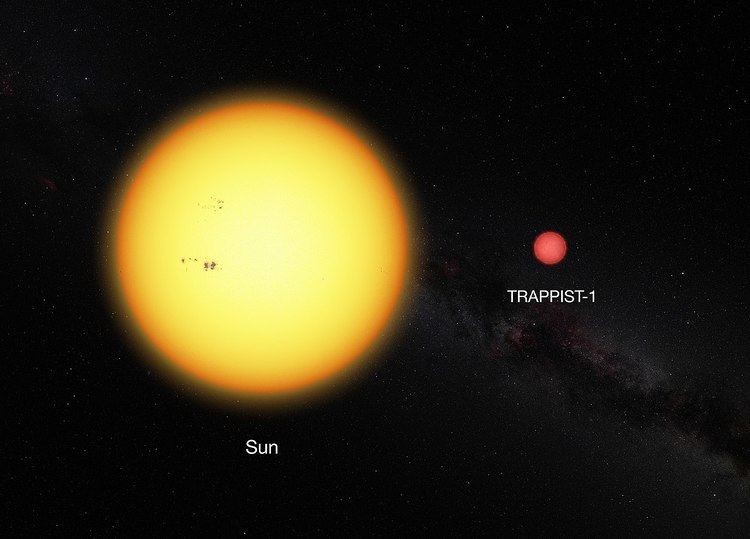 | ||
An ultra-cool dwarf is a stellar or sub-stellar object of spectral class M that has an effective temperature under 2,700 K (2,430 °C; 4,400 °F). TRAPPIST-1 is a widely known example of an ultra-cool dwarf star.
The notion of ultra-cold dwarf stars was introduced in 1997 by J. Davy Kirkpatrick, Todd J. Henry, and Michael J. Irwin. Today, it includes M-dwarf late-type stars, at the threshold of L4 dwarf stars. They form a heterogeneous group which includes stars of very low mass and brown dwarfs. Together, they represent about 15% of astronomical objects in the stellar neighbourhood of the Sun.
The accretion model suggests that, considering their low mass and the small size of their proto-planetary disks, these stars could host a relatively abundant population of Earth-like planets ranging from Mercury-size to Earth-size. The discovery of the TRAPPIST-1 system of seven Earth-like planets seems to validate this accretion model.
Due to their slow hydrogen fusion compared to other types of low mass stars their life span is estimated to exceed a hundred billion years. As the age of the universe is only 13.8 billion years, all cool dwarf stars are relatively young.
